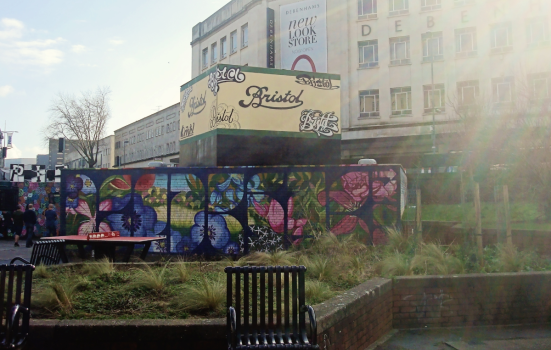Analysis suggests creative firms follow existing gentrification, while artists and workers precede it, leaving an often 'very small' correlation between the sector and gentrification of a neighbourhood.

Paolo1 via iStock
A new paper published by the Creative Industries Policy and Evidence Centre (Creative PEC) suggests the relationship between the creative industries and the gentrification of neighbourhoods is overstated.
The study, Creative Destruction? Creative firms, workers and residential gentrification, is the first of its kind to examine the impact an increase in artists, creative firms and creative professionals moving to an area has on a neighbourhood.
It found overall correlation between localised creative activity and subsequent gentrification is small, even in the most creatively dense neighbourhoods.
READ MORE:
Analysts found that, in an average neighbourhood, a 10% increase in the share of creative industry businesses in 2001 led to 0.02% increase in its probability to gentrify over the next decade (2001-2011).
Meanwhile, a 10% increase in creative workers in 2001 led to a 0.2% increase in the probability of gentrification in an average neighbourhood over the following decade.
The impact of gentrification was found to be more pronounced in a minority of neighbourhoods. When researchers considered the link in only the largest urban areas – London, Birmingham, Manchester, Liverpool, Bristol and Cardiff – the probability creative industry businesses increased gentrification rose to 0.04%.
Meanwhile, creative workers increased chances of gentrification in these six cities by 0.37%.
“Our latest paper shows that while places differ in myriad ways, gentrification is far from inevitable and in fact in the majority of cases is small,” said Professor Hasan Bakhsi, Director of the Creative PEC.
The paper concludes there have been different reasons for why creative firms and creative workers move to new neighbourhoods.
It found artists often precede gentrification, moving to an area attracted by lower rents which overtime, attracts higher income residents that often displace the artists themselves.
In contrast, creative businesses and creative service workers tend to follow neighbourhood change, rather than cause it.
Dr Tasos Kitsos, Associate Professor in Economics at Aston University and one of the report’s authors, added: “Our expansive, quantitative research design uncovers a range of mechanisms affecting the relationship between creatives and gentrification.
“As such, we manage to reconcile the disparate views on whether the creatives precede or follow gentrification and the inconsequential effects at the aggregate level with the experiential narratives of rapidly gentrified areas.”
Driving economic regeneration
Creative PEC says its latest findings could help the creative sector play a bigger and more inclusive role in the economic regeneration of areas.
It says while creatives have a small influence on gentrification, investment in the creative sector through ‘creative city’ and place-making activities can lead to economic growth and should be encouraged.
“It is sometimes claimed that growing creative clusters sets off a process of house price inflation whereby artists are crowded out,” Bakhsi said.
“Although often lower paid, such artists are a driving force in the creative economy, so such residential gentrification may undermine clusters just as they are developing.
“Policymakers should be mindful of the impact of growing creative clusters on house prices for local artists, but this is no reason for not growing them.”
Creative PEC’s analysis also highlights opportunities for planning and community building policies to mitigate gentrification while supporting local economies.
It says a focus on labour market renewal and economic return needs to be carried out in tandem with local initiatives that understand the local area, such as community building activity, skills training, rent control measures and planning interventions.
“The upshot is that it is far from inevitable that investment in local creative activities will drive gentrification,” Bernard Hay, Creative PEC’s Head of Policy wrote on Twitter/X.
“In areas where the chance is higher, policy makers should consider the specificities of place through planning, community building and up-skilling policies.”




